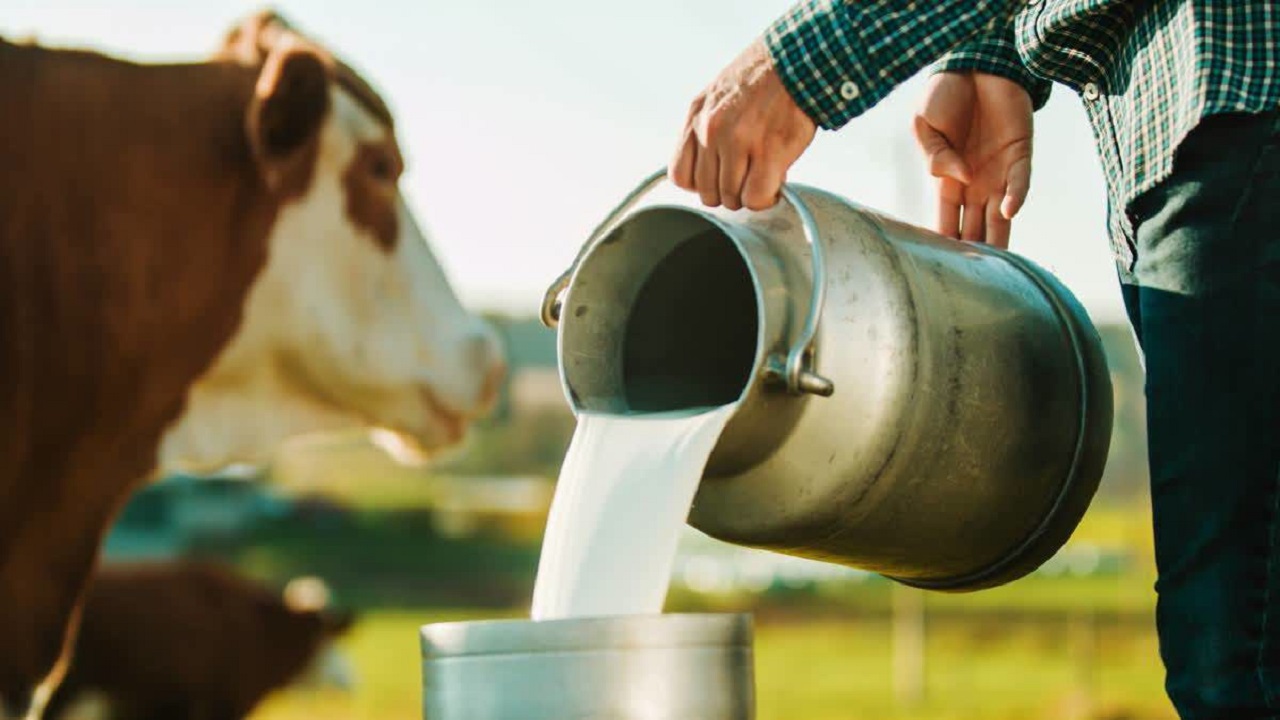Dairy Industry in India : Competitiveness Amid Challenges
Context
Unlike crops such as maize, where US farmers enjoy far higher yields and lower prices, India’s dairy sector continues to remain globally competitive. While American corn is cheaper due to productivity advantages, this price edge does not extend to milk.
India’s low-cost dairying model—based on smallholder farmers feeding cattle with crop residues and byproducts—keeps production costs low and ensures that Indian milk prices remain competitive, even without large-scale industrial farms.
Dairy Industry in India – An Overview
-
India is the largest milk producer for over two decades, contributing 25% of global milk output and about 5% to the national GDP.
-
In 2024, milk production was estimated at 239 million metric tonnes (MMT).
-
The sector employs 80+ million farmers, especially small and marginal households, providing vital rural livelihood support.
-
The dairy market was valued at USD 135.3 billion in 2024, projected to grow to USD 274.09 billion by 2032 at a CAGR of 9.33%.
-
Major milk-producing states include Uttar Pradesh, Maharashtra, Rajasthan, Punjab, Madhya Pradesh, Himachal Pradesh, and Tamil Nadu.
Government Initiatives
Key schemes to enhance productivity and strengthen cooperatives include:
-
Rashtriya Gokul Mission – Improvement and conservation of indigenous breeds.
-
National Dairy Development Board (NDDB) programmes – Cooperative strengthening and farmer support.
-
National Programme for Dairy Development (NPDD) – Infrastructure and productivity improvements.
-
Dairy Entrepreneurship Development Scheme (DEDS) – Promoting self-employment.
-
State Cooperative Dairy Federations – Enhancing procurement and marketing efficiency.
Price Competitiveness of Milk
-
In July 2025, the US Federal Milk Marketing Order (FMMO) fixed prices at about Rs 36.7/litre for 3.5% fat milk.
-
In Maharashtra, farmers received Rs 34/litre for comparable quality milk.
-
In the European Union, the price was much higher at Rs 55.6/litre.
This places India’s farmgate milk price at par or lower than the US and far below EU levels, making it globally competitive.
Yield Comparisons
-
India: 1.64 tonnes per cow annually
-
New Zealand: 4.6 tonnes
-
European Union: 7.3 tonnes
-
United States: 11 tonnes
Despite low yields, India’s dairying remains competitive because it is labour-intensive. Tasks like feeding, milking, cleaning sheds, and fodder management are performed manually at low wage costs, unlike in the West where costly automation and machinery dominate.
Processing and Marketing Efficiency
-
Retail Prices: US whole milk ~ Rs 100.4/litre; Indian cooperative milk (Amul toned) ~ Rs 55–57/litre.
-
Farmer’s Share: Indian farmers receive 55–57% of the consumer price, compared to just 35% in the US.
-
GCMMF (Amul): Shares over 75% of consumer price with farmers, paying Rs 44–45/litre for cow milk and Rs 65–66/litre for buffalo milk.
This reflects India’s efficient cooperative model, with streamlined procurement, processing, transportation, and marketing systems that maximise farmer returns.
Challenges to Competitiveness
-
Heavy reliance on unpaid family labour and recovery of only out-of-pocket expenses (feed, veterinary care).
-
Labour scarcity and rising opportunity costs as rural youth shift to education and alternative jobs.
-
Lack of large grazing pastures (unlike New Zealand).
-
High capital and energy costs, making heavy mechanisation (as in the US) difficult.
-
Structural contrast: 50 million small farmers and 110 million animals in India vs only 24,470 large mechanised farms in the US.
Way Forward
To sustain global competitiveness, India must focus on:
-
Selective mechanisation suitable for smallholders.
-
Genetic improvement and advanced breeding technologies.
-
Cultivation of protein-rich, high-yield fodder grasses.
-
Moving from a labour-cost advantage to efficiency and productivity gains.
Conclusion
India’s dairy sector is a rare example in agriculture where the country matches global efficiency, despite lower yields and fragmented production. Its strength lies in low-cost production models, cooperative institutions, and farmer-centric marketing systems. However, the future competitiveness of the sector will depend on sustainable productivity improvements, innovation, and selective modernisation rather than continuing dependence on cheap labour.
Source : Indian Express
Visit Indian Express Newspaper : https://indianexpress.com/




Comments (0)